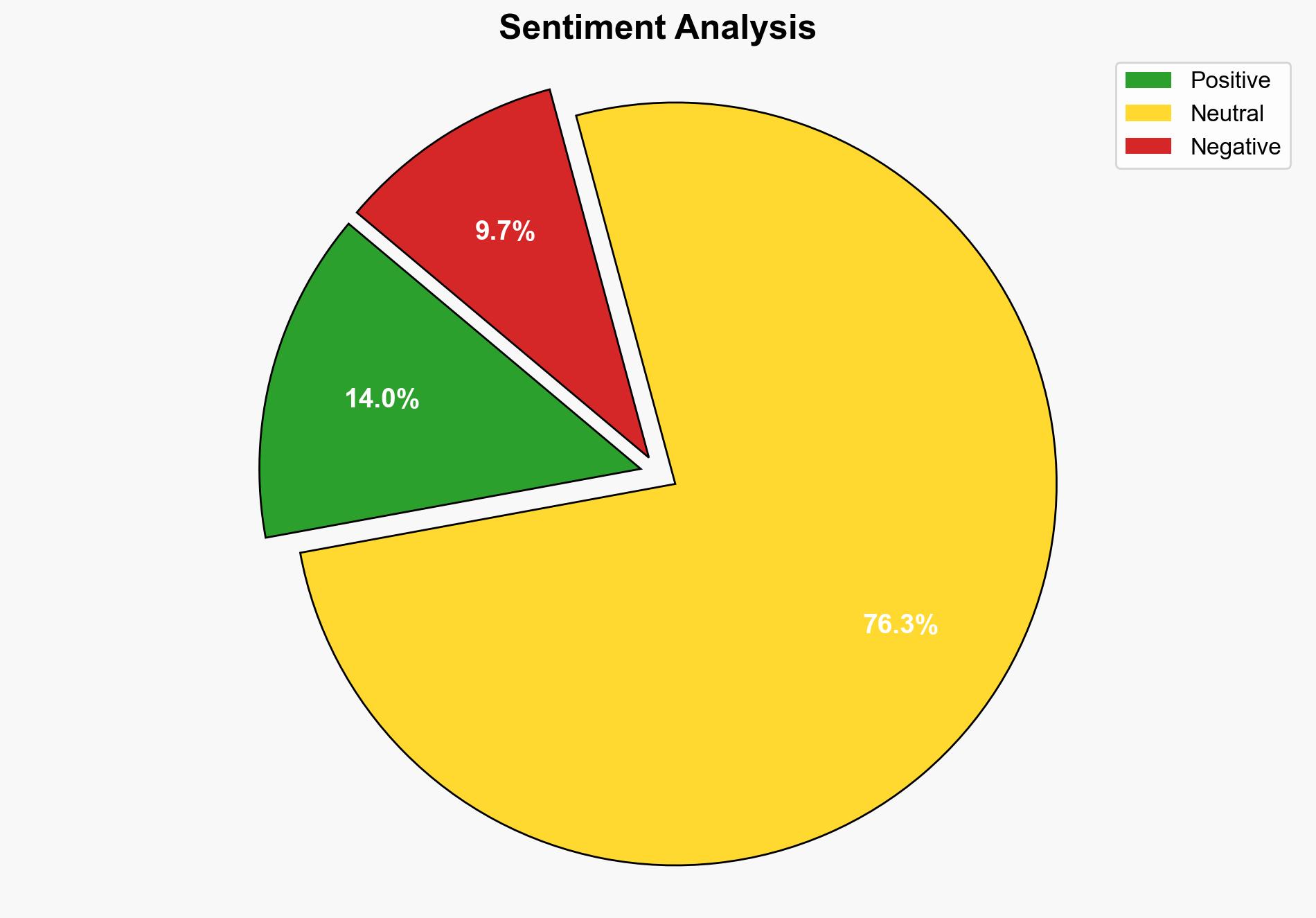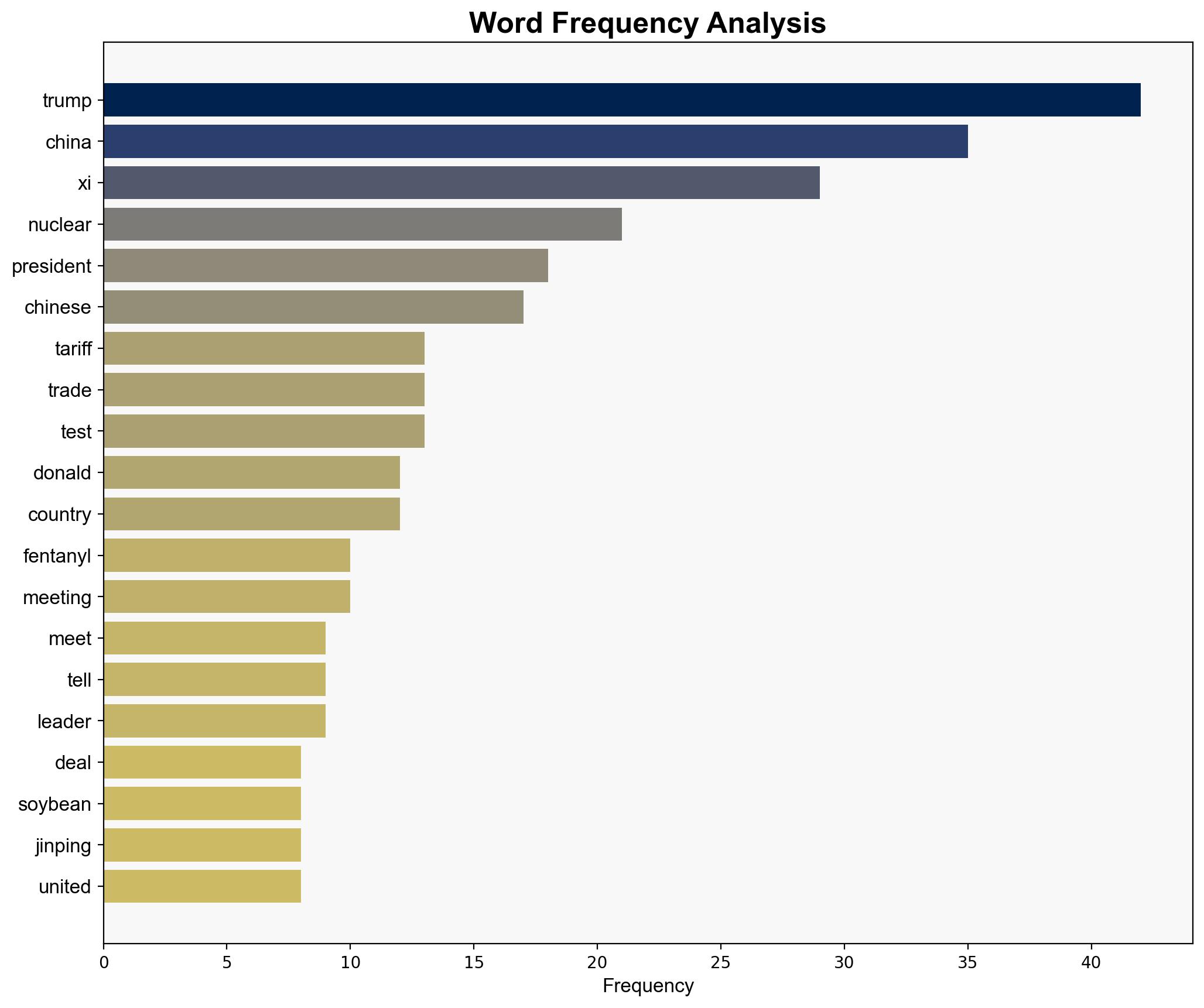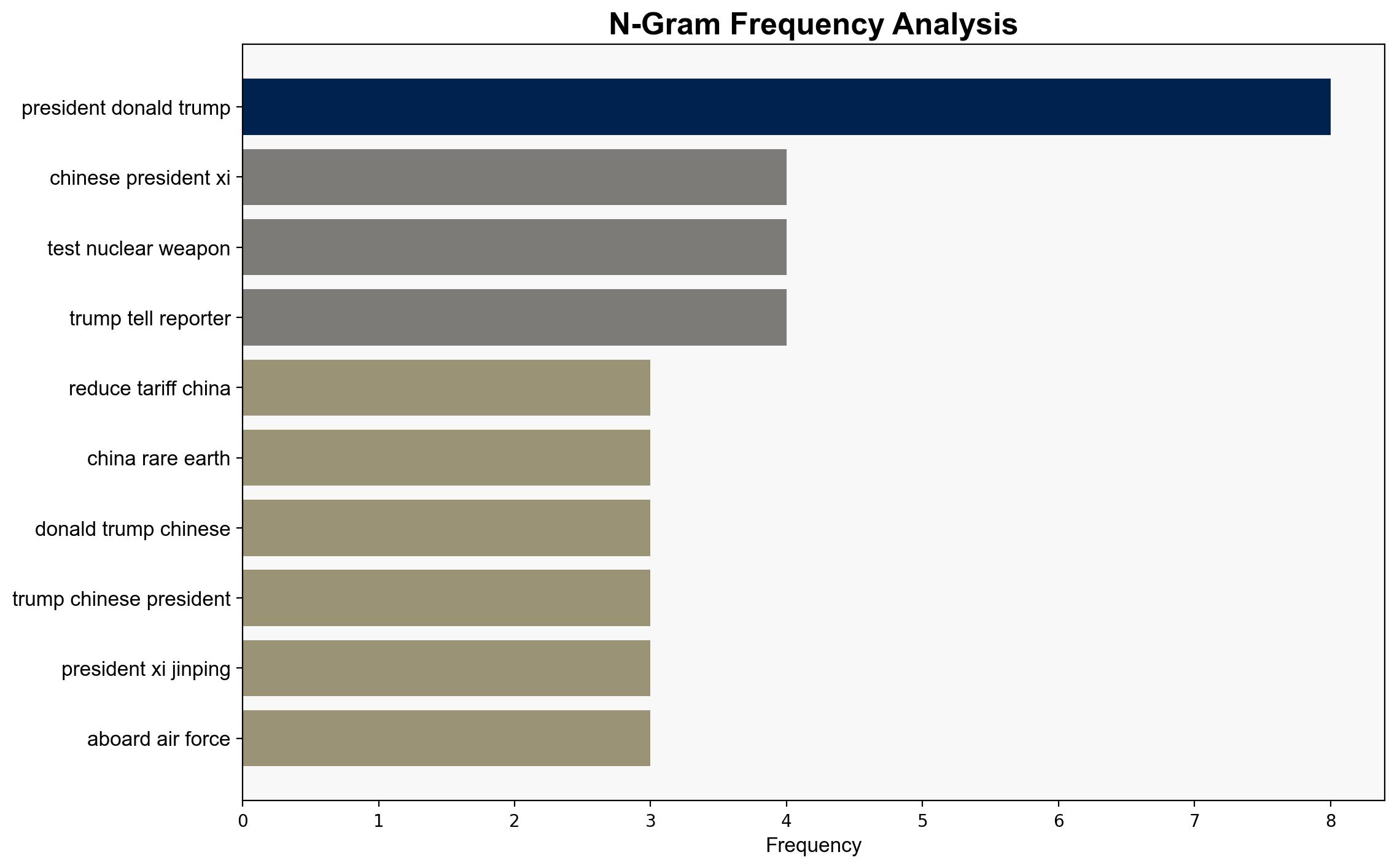Trump Xi reach deal to cut tariffs and boost trade – DW (English)
Published on: 2025-10-30
Intelligence Report: Trump Xi reach deal to cut tariffs and boost trade – DW (English)
1. BLUF (Bottom Line Up Front)
The strategic judgment indicates a moderate confidence level that the deal between Donald Trump and Xi Jinping to cut tariffs and boost trade represents a genuine attempt to de-escalate trade tensions. However, there is a competing hypothesis that this agreement may primarily serve as a temporary measure to gain strategic leverage in broader geopolitical negotiations. The recommended action is to closely monitor subsequent economic and diplomatic interactions between the United States and China to assess the deal’s implementation and impact.
2. Competing Hypotheses
– **Hypothesis 1**: The agreement to cut tariffs and boost trade is a genuine effort by both leaders to resolve ongoing trade tensions and stabilize global economic relations. This hypothesis is supported by the mutual acknowledgment of the need to refine and finalize follow-up work to maintain and implement the consensus.
– **Hypothesis 2**: The agreement is a strategic maneuver by both parties to temporarily ease tensions while pursuing other geopolitical objectives, such as influencing nuclear testing policies or gaining leverage in other international negotiations. This hypothesis is supported by the simultaneous discussions around nuclear testing and broader geopolitical concerns.
3. Key Assumptions and Red Flags
– **Assumptions**: It is assumed that both parties are acting in good faith and are committed to the long-term implementation of the agreement. Another assumption is that the economic benefits of the deal outweigh any potential political costs.
– **Red Flags**: The timing of the agreement coinciding with discussions on nuclear testing raises questions about the true motivations behind the deal. Additionally, the lack of detailed information on the specific terms of the agreement and how they will be enforced is a significant blind spot.
4. Implications and Strategic Risks
– **Economic Risks**: Failure to implement the agreement could lead to renewed trade tensions, disrupting global supply chains and economic stability.
– **Geopolitical Risks**: If the agreement is primarily a strategic maneuver, it could lead to increased geopolitical tensions, particularly if linked to nuclear testing policies.
– **Psychological Risks**: The perception of insincerity or manipulation in the agreement could damage trust between the two nations, impacting future negotiations.
5. Recommendations and Outlook
- Monitor the implementation of the agreement closely, focusing on trade volumes and tariff adjustments.
- Engage in diplomatic dialogue to clarify the intentions behind the agreement and address any linked geopolitical issues, such as nuclear testing.
- Scenario Projections:
- Best Case: Successful implementation leads to improved economic relations and reduced geopolitical tensions.
- Worst Case: Breakdown of the agreement exacerbates trade tensions and geopolitical conflicts.
- Most Likely: Partial implementation with ongoing negotiations to address broader strategic concerns.
6. Key Individuals and Entities
– Donald Trump
– Xi Jinping
– Guo Jiakun (Chinese Foreign Ministry Spokesman)
7. Thematic Tags
national security threats, economic diplomacy, trade relations, geopolitical strategy





